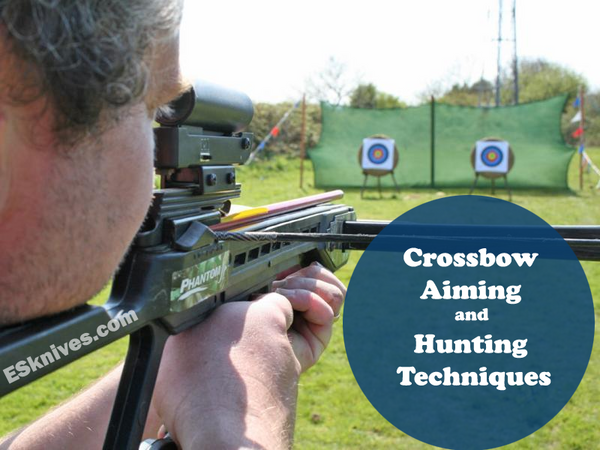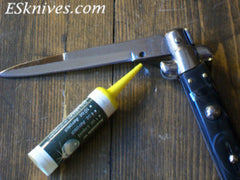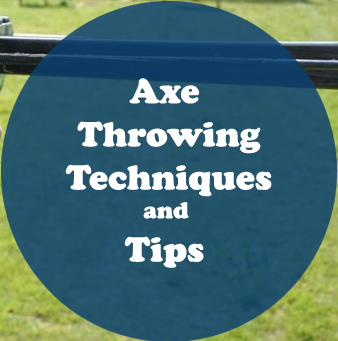| ARBALIST |
Latin language term for crossbow, derived from arcuballista (also spelled ARBALEST). |
| ARMBRUST |
German language term for crossbow which is often preferred in international circles. |
| ARROW |
Synonym for bolt which is preferred by some modern crossbow manufacturers. |
| BACK |
Side of bow or lath facing target. |
| BALLISTA |
Roman seige engine similar to oversized crossbow. |
| BARREL |
Section of the stock between the latch and lath; sometimes used as synonym for track. |
| BARRELED CROSSBOW |
Crossbow having a tubular barrel rather than a track; used to shoot balls, usually of lead; synonym for slurbow. |
| BASTARD STRING |
String to brace a crossbow for installation of bowstring; synonym for bracing string. |
| BELLY |
Side of bow or lath facing shooter. |
| BELT HOOK |
Metal hook(s) attached to belt to aid cocking. |
| BENDING LEVER |
Hindged lever to aid cocking; pushes string back using lugs or a ring mounted at front of crossbow; provides mechanical advantage of about 5:1, varying with lever length. |
| BINDING |
See BRIDLE. |
| BOLT |
Short projectile for crossbow resembling arrow. |
| BOLT CHANNEL |
See TRACK. |
| BOW |
See LATH. |
| BOW IRONS |
Metal fittings used to secure lath to stock; usually tightened with metal wedges. |
| BOWSTEEL |
Steel lath. |
| BOWSTRING |
String used on all archery weapons to transfer force from bow to projectile. |
| BRACED |
Position of bowstring when mounted on bow or lath, but not cocked. |
| BRACED HEIGHT |
Distance between braced bowstring and belly side of riser, measured from the bowstring's center. |
| BRACING STRING |
See BASTARD STRING. |
| BRIDLE |
Binding, usually of twisted sinew cord, used to tie lath to stock on medieval crossbows. |
| BULLET CROSSBOW |
Crossbow designed to shoot bullets; generally used in reference to double-string types. |
| BUTT |
Rearmost portion of crossbow stock; also refers to earthen mound used in long range target shooting, and as a general term for backstop. |
| CATCH |
See LATCH and SAFETY. |
| CENTER-SHOT |
Bow or crossbow lath designed so that the arrow/bolt passes through its center; center-shot crossbows often have two separate limbs. |
| CLEAN DRAW |
See POWER STROKE. |
| CLIP |
Spring used to retain bolt to cocked crossbow prior to shooting; usually made of horn or metal. |
| CLOUT |
Long range archery shooting. Modern practice uses a horizontal target 15 meters in diameter outlined with flags; scoring is determined by measuring distance from center. |
| COCK |
To draw bowstring from braced position to latched position. |
| COCKING LUGS |
Metal protruberances on crossbow for anchoring bending lever, cranequin or goat's foot. |
| COCKING PEG |
Peg required to set some crossbow trigger mechanisms prior to cocking. |
| COCKING RING |
Metal ring bound to the front of the lath to anchor bending lever. |
| COCKSCOMBING |
Method of serving sometimes used on loops of crossbow bowstrings. |
| COMPOSITE |
Combination of materials used to construct lath including horn, wood, sinew and baleen. |
| COMPOUND |
Modern lath construction using cables and eccentric pulleys. |
| CORD AND PULLEY |
Cocking aid consisting of cord with ends attached to crossbow butt and user's belt running through a pulley attached to bowstring; provides mechanical advantage of 2:1. |
| CRANEQUIN |
Cocking device using rack and pinion; can provide mechanical advantage of about 145:1, varying with size and number of teeth. |
| CROSSBOW |
Archery weapon consisting of a lath mounted to a rigid stock, having a mechanical means to hold and release the drawn bowstring. See also ARBALEST, ARMBRUST, BARRELED CROSSBOW, BULLET CROSSBOW. |
| DOG'S FOOT |
See GOAT'S FOOT |
| DOUBLE STRING |
Complex form of bowstring designed to launch round projectiles from crossbow; has leather pouch at center to hold ball. |
| DRY-FIRE |
To release cocked bowstring without projectile; term borrowed from firearms. |







 Need to sharpen a knife? We'll help you out with some tips. Knives are an intimate part of
Need to sharpen a knife? We'll help you out with some tips. Knives are an intimate part of 







